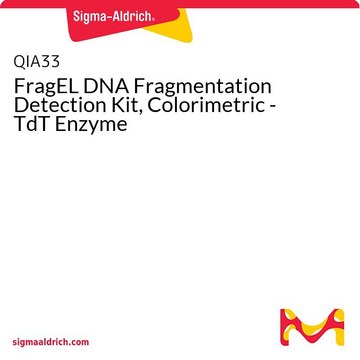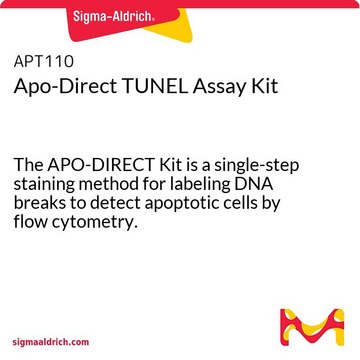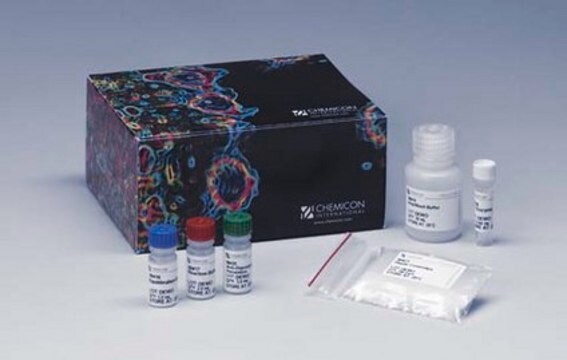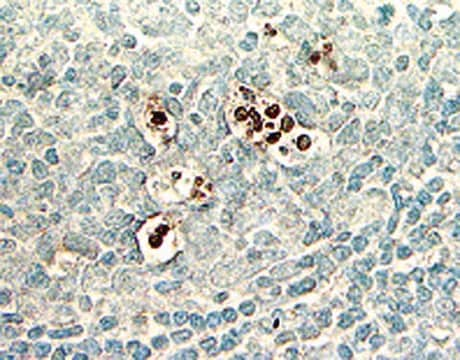QIA39
FragEL DNA Fragmentation Detection Kit, Fluorescent - TdT Enzyme
Synonyme(s) :
TUNEL Assay
About This Item
Produits recommandés
Utilisation
sufficient for 50 tests
Niveau de qualité
Réactivité de l'espèce (prédite par homologie)
all
Fabricant/nom de marque
Calbiochem®
Conditions de stockage
OK to freeze
avoid repeated freeze/thaw cycles
Technique(s)
flow cytometry: suitable
Entrée
sample type cell suspension(s)
sample type frozen section(s)
sample type paraffin section(s)
sample type fixed-cell preparation(s)
Méthode de détection
fluorometric
Conditions d'expédition
wet ice
Température de stockage
−20°C
Description générale
Composants
Avertissement
Caractéristiques
Principe
Stockage et stabilité
Autres remarques
Frey, T. 1997. Cytometry28, 253.
Shapiro, H.M. 1995. Practical Flow Cytometry, Third Edition. Wiley-Liss Inc., New York, New York.
Darzynkiewicz, Z., et al. 1992. Cytometry13, 795.
Gavrieli, Y., et al. 1992. J. Cell Biol.119, 493.
Fawthrop, D. J., et al. 1991. Arch. Toxicol.65, 437.
Martin, S.J., et al. 1990. J. Immunology145, 1859.
Wyllie, A. H. 1980. Nature284, 555.
Kerr, J. F. R., et al. 1972. Br. J. Cancer26, 239.
Informations légales
Mention d'avertissement
Danger
Mentions de danger
Classification des risques
Acute Tox. 4 Inhalation - Acute Tox. 4 Oral - Aquatic Chronic 2 - Carc. 1B - Eye Irrit. 2
Code de la classe de stockage
6.1C - Combustible acute toxic Cat.3 / toxic compounds or compounds which causing chronic effects
Certificats d'analyse (COA)
Recherchez un Certificats d'analyse (COA) en saisissant le numéro de lot du produit. Les numéros de lot figurent sur l'étiquette du produit après les mots "Lot" ou "Batch".
Déjà en possession de ce produit ?
Retrouvez la documentation relative aux produits que vous avez récemment achetés dans la Bibliothèque de documents.
Les clients ont également consulté
Notre équipe de scientifiques dispose d'une expérience dans tous les secteurs de la recherche, notamment en sciences de la vie, science des matériaux, synthèse chimique, chromatographie, analyse et dans de nombreux autres domaines..
Contacter notre Service technique














